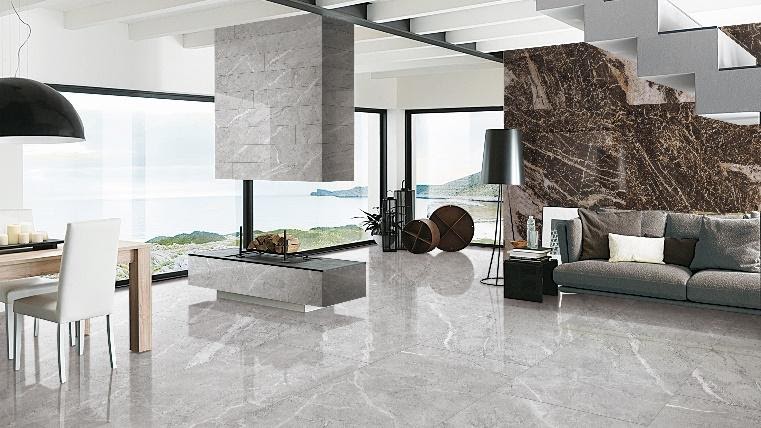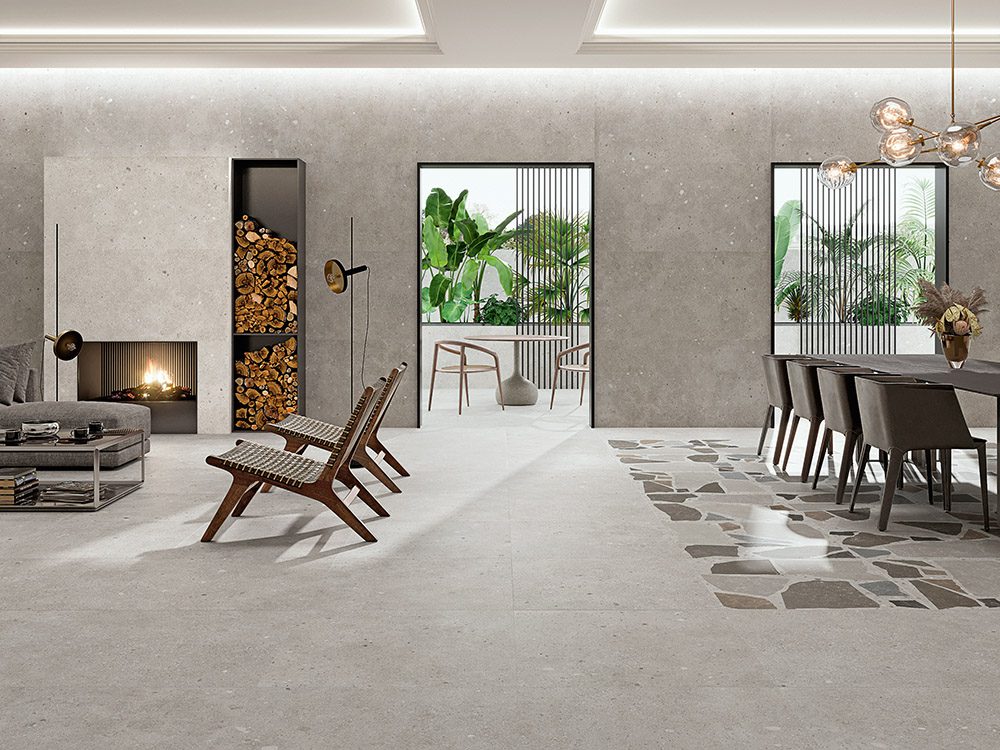Global Partnerships in Tile and Ceramic: Unlocking New Horizons for Iran’s Industry
The tile and ceramic industry has long been a source of pride for Iran, blending centuries-old craftsmanship with modern industrial potential. As one of the world’s top producers, Iran boasts an annual output of over 500 million square meters of tiles and ceramics. Yet, in a rapidly evolving global market, standing still is not an option. International collaborations offer a transformative opportunity—unlocking access to cutting-edge technologies, opening new export markets, and driving economic growth. But how can these partnerships reshape Iran’s industry, and what tangible benefits do they promise?
In this article, we explore the exciting possibilities of global cooperation in the tile and ceramic sector. From adopting advanced manufacturing techniques to tapping into lucrative international markets, these alliances hold the key to elevating Iran’s position on the world stage. With a focus on technology transfer, export market development, and the resulting advantages for Iran, this comprehensive guide—written in a clear, professional tone—lays out a roadmap for stakeholders eager to embrace the future.
Why International Collaboration Matters for Iran’s Tile and Ceramic Industry
Iran’s tile and ceramic industry is a powerhouse, fueled by abundant raw materials, a skilled workforce, and a rich cultural heritage. However, it faces challenges that limit its full potential—outdated equipment, high energy costs, and restricted access to premium global markets. International partnerships can address these hurdles, offering a pathway to innovation and growth.
The Current Landscape: Strengths and Gaps
Iran’s strengths are undeniable. It ranks among the top five tile producers globally, with a robust domestic market and competitive pricing. Yet, inefficiencies linger. Many manufacturers rely on aging technology, leading to higher production costs and lower product quality compared to industry leaders like Italy or Spain. Additionally, while Iran excels in volume, its export reach remains limited, particularly in high-value markets.
The Promise of Global Alliances
Collaborating with international partners can turn these challenges into opportunities. By working with foreign companies, research institutions, or trade bodies, Iran’s industry can:
- Modernize production: Access to advanced tools and processes can streamline operations and improve quality.
- Expand market reach: Partnerships can unlock new regions, from neighboring Middle Eastern countries to distant European and Asian markets.
- Boost innovation: Exposure to global trends can inspire fresh designs and applications, keeping Iran competitive.
In short, international collaborations are a catalyst for progress, enabling Iran to build on its strengths and overcome its limitations.
Opportunities for Technology Transfer
Technology transfer lies at the heart of international collaboration, offering Iranian manufacturers the chance to adopt state-of-the-art solutions. But what technologies are most relevant, and how can they be integrated effectively?
Cutting-Edge Manufacturing Techniques
The global tile and ceramic industry is undergoing a technological revolution. Key advancements that Iran can leverage include:
- Digital Printing: This technology enables intricate, customizable designs—think tiles that replicate natural stone or wood—meeting the demands of modern consumers.
- Energy-Efficient Kilns: Advanced kilns can cut energy use by up to 30%, tackling one of Iran’s biggest production expenses.
- Automated Quality Control: AI-powered systems detect flaws instantly, ensuring consistent quality and reducing waste.
Learning from Global Leaders
Countries like Italy and Spain set the benchmark for tile production. Italy, for instance, excels in sustainable manufacturing and innovative design. A partnership with an Italian firm could bring:
- Advanced Glazing Techniques: Enhancing durability and aesthetics.
- Sustainable Practices: Reducing environmental impact and costs.
- Training Programs: Equipping Iranian workers with new skills.
Such collaborations could take the form of joint ventures, technology licensing, or even expert-led workshops.
Overcoming Adoption Challenges
Integrating new technology isn’t seamless. High upfront costs, a shortage of trained personnel, and resistance to change can pose barriers. Iran can address these by:
- Securing Government Support: Subsidies or tax incentives can offset initial investments.
- Building Local Expertise: Partnering with universities to train workers and engineers.
- Starting Small: Pilot projects can test technologies before scaling up.
With the right strategies, technology transfer can modernize Iran’s industry, making it more efficient and competitive.
Developing Export Markets Through Strategic Alliances
While technology enhances production, export market development focuses on reaching new customers. International collaborations can pave the way, helping Iranian manufacturers expand their global footprint.
Targeting High-Potential Regions
Not every market is a fit, but several regions stand out:
- Middle East and North Africa (MENA): Proximity and booming construction make this a prime target.
- Central Asia: Rapid urbanization in countries like Kazakhstan drives demand for tiles.
- Europe: Though competitive, Europe’s appetite for premium, unique designs offers a niche for Iranian products.
Establishing a Global Presence
Breaking into new markets requires more than quality products—it demands strategy. Collaborations can support this through:
- Joint Marketing: Teaming up with foreign distributors to promote Iranian tiles under a shared brand.
- Trade Fair Participation: Showcasing products at events like Cersaie in Italy, with partners amplifying visibility.
- Standards Compliance: Working with international bodies to certify products, building trust with buyers.
Navigating Export Challenges
Exporting comes with obstacles—tariffs, regulations, and logistics among them. Partnerships can help:
- Leveraging Trade Agreements: Collaborating with countries under free trade deals can lower barriers.
- Local Expertise: Foreign partners can guide compliance with local rules and preferences.
- Optimized Supply Chains: Joint efforts can streamline shipping and distribution.
With these approaches, Iran can turn export markets into a major growth driver.
The Benefits of International Collaborations for Iran
The impact of global partnerships extends beyond production and sales—it transforms Iran’s economy, workforce, and reputation.
Driving Economic Growth
Collaborations fuel economic gains in multiple ways:
- Higher Exports: New markets increase revenue, strengthening the trade balance.
- Foreign Investment: Partnerships can attract capital for upgrades and expansion.
- Job Creation: A thriving industry creates roles in manufacturing, design, and logistics.
Boosting Competitiveness
In a crowded global market, staying ahead is critical. Partnerships enable Iran to:
- Cut Costs: Efficient technologies reduce expenses, allowing competitive pricing.
- Raise Quality: Modern tools ensure products meet international standards.
- Innovate: Global insights inspire new designs and applications.
Enhancing Global Standing
Beyond economics, collaborations elevate Iran’s profile:
- Stronger Ties: Business links can foster diplomatic and cultural connections.
- Brand Prestige: High-quality exports build Iran’s reputation.
- Knowledge Exchange: Iran gains and shares expertise, contributing to global progress.
These benefits collectively position Iran as a leader in the tile and ceramic industry.
Case Studies: Collaboration in Action
To see the potential in practice, consider these realistic scenarios.
Case Study 1: Technology Transfer with Spain
An Iranian manufacturer partners with a Spanish company specializing in digital printing.
- Results: The firm adopts digital printing, cutting production time and launching a new design line. Energy-efficient kilns save 25% on costs, and exports to MENA rise by 15%.
Case Study 2: Market Expansion with Germany
An Iranian exporter teams up with a German distributor to target Europe.
- Results: Joint marketing highlights Iran’s craftsmanship, earning a foothold in Germany. Compliance with EU standards boosts credibility, and sales grow by 20% in two years.
These examples show how targeted partnerships deliver measurable outcomes.
Addressing Collaboration Challenges
Partnerships aren’t without risks. Proactive solutions can ensure success.
Cultural and Communication Gaps
Differences in language or business norms can create friction. Iran can:
- Train Teams: Offer cross-cultural workshops.
- Use Intermediaries: Local experts can bridge gaps.
Protecting Intellectual Property
Sharing technology raises IP concerns. Safeguards include:
- Clear Contracts: Define rights and usage upfront.
- Legal Oversight: Consult experts in international law.
Managing Instability
Political or economic shifts can disrupt plans. Iran can:
- Diversify Partners: Spread risk across multiple countries.
- Build Flexibility: Include adaptive terms in agreements.
With these measures, collaborations can thrive despite challenges.
The Role of Support Systems
Government and industry bodies play a vital role:
- Trade Facilitation: Negotiating favorable terms with partner countries.
- Financial Incentives: Offering grants or tax breaks for collaboration.
- Networking: Organizing trade missions to connect firms.
This support creates a fertile ground for partnerships.
Conclusion: Seizing the Global Opportunity
Iran’s tile and ceramic industry is poised for a leap forward, and international collaborations are the key. By embracing technology transfer and export market development, Iran can modernize its operations, reach new customers, and reap economic rewards. The path involves challenges, but with strategic planning and support, the benefits—growth, competitiveness, and global recognition—are within reach.
The time to act is now. Industry leaders, policymakers, and manufacturers must unite to forge these alliances, ensuring Iran’s tile and ceramic sector not only survives but thrives in the global arena. The future is bright—let’s build it together.
قیمت های موجود در سایت تاریخ بروزرسانی آن ها ذکر شده و قیمت نهایی محصولات نمی باشند. لطفا جهت ثبت سفارش و استعلام قیمت بروز با کارشناسان ما در ارتباط باشید.
(035-3357)

